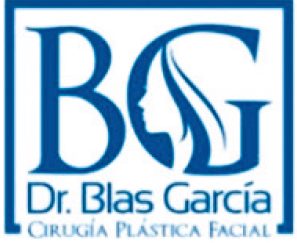see wave a Blue flag on a beach it guarantees the quality of the water, services and safety, three key elements for you to be granted that European distinction, where Spain is the leader due to the quantity and quality of its coves.
However, there are beaches, due to their consideration of, in quotes, wild, which are labeled as the best in the Canary Islands, Cofete in Fuerteventura or Diego Hernández in Tenerife, but precisely that condition of virginity allows you to opt for an award where safety prevails and the comfort of the services, not only the quality of its waters, this is a fundamental point to see how previously renowned beaches such as El Médano, in Granadilla, or La Arena, in Santiago del Teide, have lost the Blue Flag, due to spills uncontrolled that occur in their environment.
In June, in the Canary Islands they will wave again 60 blue flags, of which 14 will correspond to the island of Tenerife, two more than last year and two less than in 2021. Of these 14, six are located in the southwest of the Island, Arona being, with three, the one with the most in the island, next to La Laguna, with the same amount for its natural pools.
The six southern beaches that this year will once again display the blue distinction will be five that renew their status (Las Vistas and El Camisón, in Arona; Torviscas and El Duque, in Adeje and La Jaquita, in Guía de Isora), joining this On this occasion, the Los Cristianos beach, after a deep intervention in services and water control, which also benefited from the stoppage of the pandemic, despite the creation of a tablecloth sanctuary there.
The location of Los Cristianos beach, next to the pier, tends to complicate the award of this Blue Flag, despite the quality of the services provided there. In this way, in recent years some have alternated with or without a flag. However, in this 2023 edition, municipal work is once again rewarded with this banner.
The Arona coastline management concession company has five vehicles that carry out in-depth screening with high performance, improving the collection and cleaning method, leaving the municipality’s beaches in the best possible condition every morning.
And as for the coastal security service, in addition to improving the rescue modules, this service in Arona has a staff of 17 permanent lifeguards throughout the year, being reinforced in the summer months (July and August) with six more troops, reaching 23, to cope with the increase in influx and also to carry out the adapted bathing service during the months of July and August on the beaches of Los Cristianos and Las Galletas, a service that is provided throughout the year in Las Vistas beach.
Focusing on Los Cristianos beach, the recovery of the Blue Flag is due, among other reasons, to the substantial improvements made in 2022: a shaded area with a 60-square-meter pergola and its respective 120-square-meter platform, with a walkway . At the same time, in summer it has an assisted bathing service, with two lifeguards, two amphibious vehicles and a crane with a capacity for 175 kilos. Similarly, to the existing bathrooms, a new toilet was added, located in front of the La Alpispa square, which has a toilet for women, men and people with reduced mobility, as well as a space set up for the rescue service. In addition, the continuous control and analysis of the water quality on a beach with a port has been vital in obtaining the Blue Flag.
other municipalities
If Arona boasts three distinctions -El Camisón and Las Vistas, they had no discussion- Adeje had to settle for two again (El Duque and Torviscas), privately managed beaches with excellent services and good water quality, which is not the case with Troya I and II, which it shares with Arona, due to the spills that have occurred in the ravine that delimits the two municipalities. The coves of Fañabé (since 2017) and La Enrramada (since 2021) also continue without a Blue Flag.
Guía de Isora repeats itself with its beach and pools in La Jaquita, in Alcalá, where the quality of the water and the services managed by a hotel company stand out. The one who cannot boast of the Blue Flag again is Santiago del Teide, who did it for no less than 32 years in a row with La Arena beach, the only one with those awards until 2030, next to Playa del Inglés in Maspalomas. The spills in Puerto Santiago have not allowed it to continue maintaining that condition of a “healthy beach”, pending the correct sanitation in the area, after endless works.
If this happens in the southwest, in the southeast everything is much worse. Granadilla, which had up to three blue flags, continues without any, also due to its poor water quality, due to uncontrolled discharges. The beaches of San Miguel, Arico, Fasnia (Los Roques), Güímar or Candelaria cannot even aspire to have the European distinction because their services are far from the minimum conditions required.
El Médano, symbolic black flag for spills
One of the busiest beaches in Tenerife, El Médano, has once again been left without a Blue Flag -it has not done so since 2018- and in this case various environmental groups have symbolically awarded it the Black Flag, due to a serious and persistent spill of Untreated wastewater, which has had serious consequences on the health of bathers and local ecosystems, in such a way that on more than one occasion it has had to be closed to the bathroom, both the Central beach and La Jaquita or La Tejita, beaches which in their day managed to obtain the Blue Flag, which is now far from renewing, at least until the great treatment plant being built in Los Letrados (38 million euros) and the treatment and pumping station of Ensenada-Pelada, and put an end to contamination. Specifically, in Granadilla there is no purification system: waste is dumped into the sea by unauthorized emissaries.














